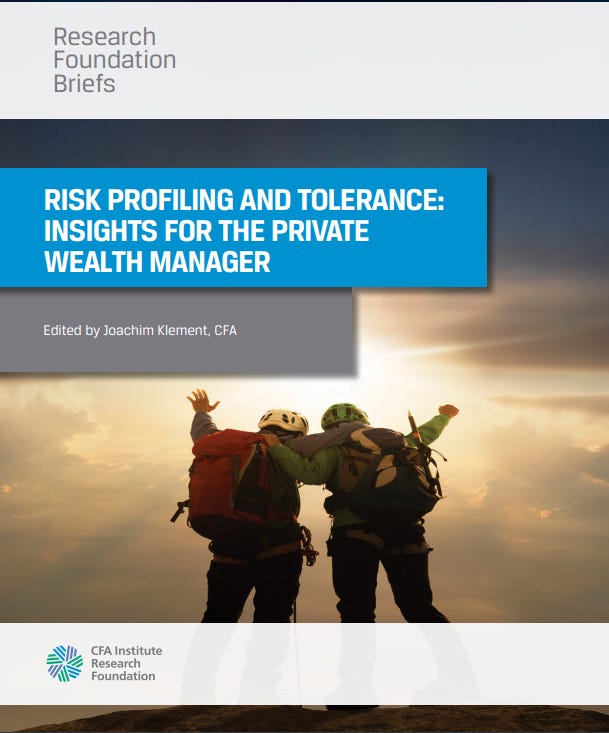Finance professionals are just like you and me
One of the eternal topics in finance and investments is the question how to properly measure risk. Modern portfolio theory uses volatility or variance as the most common measure of risk. I, together with most finance professionals, use it time and again as a proxy for risk, knowing full well that for most people, volatility does not describe risk. After all, volatility is a symmetric measure that measures deviations from the mean both to the downside and the upside. And in my career, I have never met an investor who complained abut getting a return of 20% when she was expecting 5%. Yet, deliver -10% return to the same investor and the reaction will be quite different…
We know from a mountain of studies that downside risk measures like downside variance, drawdown and similar metrics are a much better approximation for the concept of risk as it is experienced by most investors. Following in the footsteps of these studies Felix Holzmeister and his colleagues investigated how investors reacted to different investments as they changed the distribution of return. They varied not only the average expected return but also the volatility of returns, the skewness (i.e. the likelihood of above average returns vs. below average returns) and the kurtosis (i.e. how likely extreme events were). The twist of their study was that they asked not just 4,559 laypeople but also 2,213 finance professionals about their willingness to invest in the asset and their perception how risky an investment is.
Laypeople reacted just like one would expect who is familiar with the literature on risk perception: they don’t care about volatility. They also don’t care about fat tails and extreme events. If you vary the volatility or the kurtosis of an investment, the perception of the riskiness of this investment remained virtually unchanged. If the skewness of the asset changed, however, the perception of its riskiness and the willingness to invest changed significantly. If the return distribution was more positively skewed (i.e. it had a lot of small positive outcomes and a few large potential losses) then the investment was perceived as riskier and laypeople would be less willing to invest in it. If, on the other hand, the investment looked more like a lottery ticket with a high likelihood of a small loss and a small chance of a large gain, people would consider it to be less risky and be more inclined to invest in it.
But what did the financial professionals do? After all, these people are trained to think in terms of volatility as a measure of risk and they should be more sophisticated. But the experiments of Holzmeister and his colleagues showed, that finance professionals reacted the same way as laypeople. Volatility and kurtosis did not matter. What drove the perception of risk was the skewness of the returns, i.e. the relationship between potential gains and losses.
On the one hand, these results are encouraging, because it shows that finance professionals like me are no different than anybody else. On the other hand, these results are discouraging because it shows people like me are no different than anybody else. No matter how well we are trained to assess risks, we often assess them rather in terms of gut feelings rather than numbers. This shows once more that financial education is valuable to improve the understanding of investors of fundamental tenets of investing, but its potential impact may be overestimated. The job of a financial adviser is to not only educate her clients about risks, but to do so in a way that laypeople can understand. And even then, the investment process needs to be such, that the negative effects of gut reactions to risk can be mitigated. I have worked over the last couple of years on a series of papers on risk perceptions for the CFA Institute Research Foundation that provides some practical insights how this can be done. Tomorrow, I will talk a little bit more about that topic when I discuss the results of another paper.




